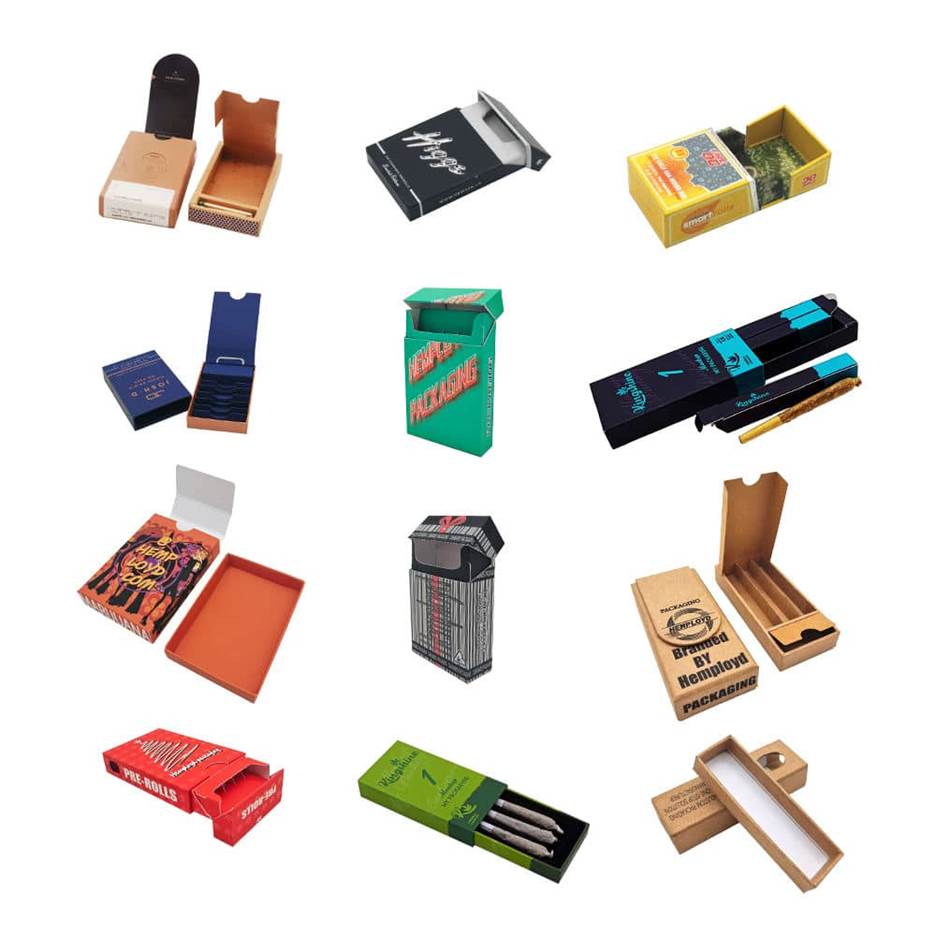
When packaging your pre-rolls, you’ve likely noticed Custom Pre-Roll Packaging costs vary greatly—from $0.50 to $5.00 per unit. What causes this broad range? Materials, design complexity, order volume, printing techniques, and compliance requirements all play critical roles.
Key Factors Affecting Custom Pre-Roll Packaging Costs:
Materials: The material choice heavily influences packaging costs. Cardboard and plastic are budget-friendly, while glass and metal provide a premium appearance at a higher price. Eco-friendly materials, like recycled paper and biodegradable plastics, may initially cost more but enhance brand appeal.
Early at Hemployd, a client resisted switching from plastic tubes to biodegradable ones due to higher costs. After testing, we saw sales rise by 15%, proving that sustainable choices attract more customers and boost profitability.
Design Complexity: Simpler designs cost less, while intricate features like embossing or foil stamping increase costs. I vividly recall working with a premium cannabis brand that requested elaborate embossing. The packaging was stunning, yet costs exceeded their expectations. Eventually, they simplified their design, highlighting the importance of aligning complexity with realistic budgets.
Order Size and Discounts: Buying in larger quantities significantly lowers unit costs due to shared setup fees and bulk discounts. One startup I advised initially placed small, cautious orders. After consolidating their orders, they reduced overall packaging costs by 25%, making clear the value of bulk ordering.
Printing Techniques and Finishes: Printing methods affect cost and appearance:
- Digital printing suits small batches with quick, affordable setups.
- Offset printing is cost-effective for large runs with superior quality.
- Flexographic printing works best for simpler designs on flexible packaging.
Special finishes like foil stamping, embossing, spot UV, and soft-touch lamination elevate your packaging’s appeal but raise expenses. New brands should consider minimal finishes initially to manage costs effectively.
Compliance Requirements: Compliance features, such as child-resistant and tamper-evident designs, are mandatory and affect costs. Common options include push-and-turn caps, squeeze-and-pull bags, and shrink bands. Compliance not only meets legal standards but builds consumer trust.
How to Save on Custom Pre-Roll Packaging Without Sacrificing Quality:
- Choose affordable materials: Cardboard, paperboard, and kraft paper are cost-effective yet attractive.
- Simplify designs: Clean, minimalistic designs reduce unnecessary costs.
- Bulk purchasing: Ordering more reduces per-unit costs significantly.
- Standard sizes: Avoid custom shapes to lower tooling costs.
- Efficient printing: Utilize cost-effective digital or flexographic printing.
- Experienced suppliers: Partnering with knowledgeable suppliers avoids costly mistakes and ensures compliance.
Selecting the right supplier is essential. Look for providers with solid reputations, compliance expertise, and competitive pricing. Negotiating bulk discounts and favorable payment terms further reduces expenses.
Understanding these factors and strategically balancing quality, compliance, and cost efficiency enables smarter decisions. Effective management of Custom Pre-Roll Packaging costs ensures you achieve premium packaging without overspending, strengthening your brand and market position.